For various experiments I got an USRP N210. Here's how to get going with gnuradio.
By default it shows up at 192.168.10.2, so configure your PC eth-interface on 192.168.10.XXX. Now
$ uhd_find_devices
Should find the device:
--------------------------------------------------
-- UHD Device 0
--------------------------------------------------
Device Address:
type: usrp2
addr: 192.168.10.2
However uhd_usrp_probe suggest upgrading the firmware and FPGA image, so we do that by:
$ sudo /usr/lib/uhd/utils/uhd_images_downloader.py
$ sudo /usr/bin/uhd_image_loader --args="type=usrp2,addr=192.168.10.2"
and after power-cycling the device we now get (in addition to a long description of the RX and TX interfaces or installed daughter-boards):
$ uhd_usrp_probe
FW Version: 12.4
FPGA Version: 11.1
To show that it works in gnuradio a simple USRP-source can be connected to a QT GUI Sink (or QT GUI Frequency Sink) that visualizes RX I/Q samples:
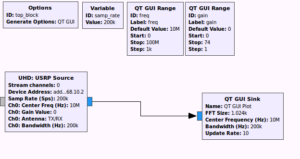
The source needs to be configured with "addr=192.168.10.2" and it uses the samp_rate, freq, and gain variables.
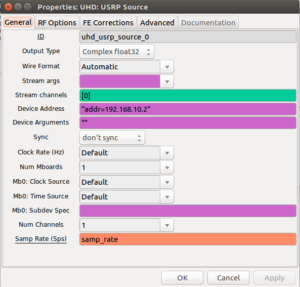
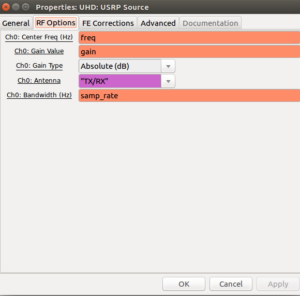
The USRP now samples at 100 MS/s, digitally downconverts a bandwidth samp_rate around a center frequency freq, and streams the samples over Ethernet to the gnuradio source node. When setting freq=10e6 and samp_rate=200k (the minimum possible!?) and applying a 10.020 MHz sine-wave to the RF1-input we get this:
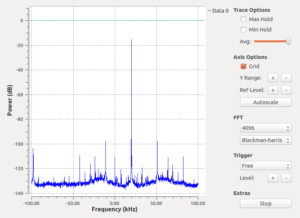
With a signal that seems close to maximum amplitude the dB-scale shows a peak at -16 dB, and without any signal applied the noise-floor close to the center frequency dips just below -140 dB rising to -135 dB at 20 kHz offset.
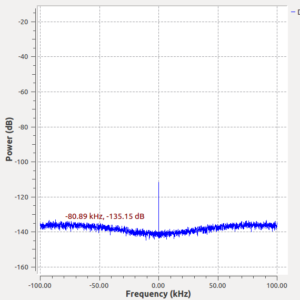
Awesome stuff! The 200 kS/s samples from one I/Q channel produce about 800 kB/s of Ethernet traffic.
Stay tuned for more SDR updates in the near future!